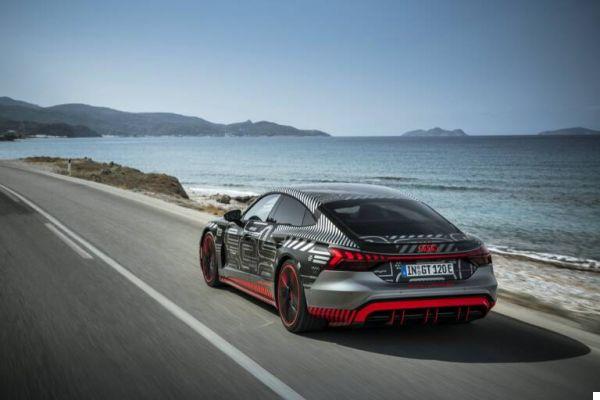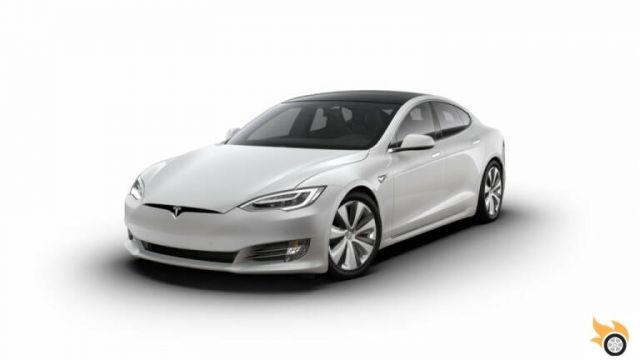In recent months, the announcements of hydrogen investment projects: these involve various areas, including the transport sector. Several car manufacturers are focusing on hydrogen and have decided to invest resources in the development of these car models; while others, on the other hand, consider it one technology that is not worth investing in. However, when it comes to hydrogen there is a very broad topic that needs to be analyzed from various points of view.
How is hydrogen obtained?
THEhydrogen is the element chemist more abundant on earth, but despite this, it is almost totally absent as a pure element, Is in fact always associated with other elements to form various substances: for example, in water it is bound together with oxygen, or in hydrocarbons it is found bound to carbon. Due to this fact, to obtain pure hydrogen it is necessary to employ various processes to separate the hydrogen from the other elements: depending on the process used and the substance from which it is split, hydrogen takes on different names.
When hydrogen is obtained from fossil fuels, without capturing carbon dioxide issued during the process, it is called black if obtained from the gasificazione of carbon or others hydrocarbons, e Grey if obtained from methane reforming. If you use the same processes but carbon dioxide is captured somehow, thehydrogen is referred to as blue: in this case, carbon dioxide emissions are reduced by 90%.
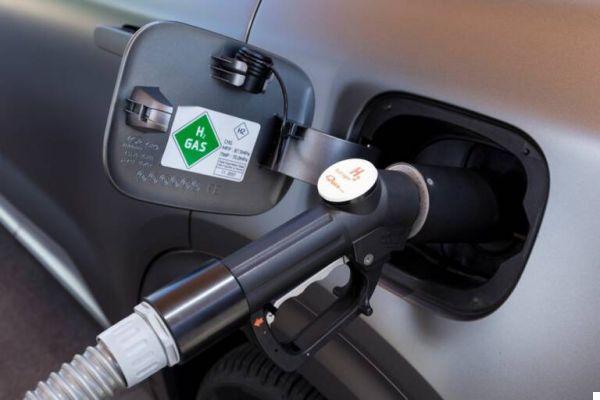
Hydrogen can also be obtained through a process of hydrolysis of water, in which electric current is used to separate hydrogen from oxygen; if the electricity used is produced by completely renewable sources, as solar and wind power, thehydrogen he's called green, while if the electricity is produced through nuclear power plants, thehydrogen It is told violet. In both cases, carbon dioxide emissions are zero.
Currently most of the hydrogen is obtained from methane without carbon dioxide capture: this is due to the fact that hydrogen obtained through electrolysis it is 3/4 times more expensive hydrogen obtained from methane reforming.
Storage and transport of hydrogen
Hydrogen, as well as electricity, constitutes an energy carrier e not a primary source of energy, like fossil fuels or the sun can be. A great advantage of hydrogen over electricity is that it can be stored in large quantities more easily. In fact, while the energy density of lithium-ion batteries, commonly used in electric cars, is maximum around 0.3 kWh / kg or 0.6 kWh / liter, hydrogen has an energy density of 40 kWh / kg, even higher than that of petrol and diesel equal to 13 kWh/kg or 10 kWh/liter.
However, even accumulating energy using hydrogen is not without problems: in fact the density of hydrogen at atmospheric pressure and at room temperature it is around 0.09 g / liter, which corresponds to an energy density of 0.0036 kWh / liter. While the hydrogen compressed at 350 bar, such as inside the tanks of trucks, reaches an energy density of 0.9 kWh / liter. Hydrogen compressed at 700 bar, as in car tanks, reaches an energy density of 1.4 kWh / liter; moreover, if the hydrogen is liquefied, it reaches an energy density of 2.8 kWh / liter. For this reason, hydrogen must be liquefied or compressed to be stored.
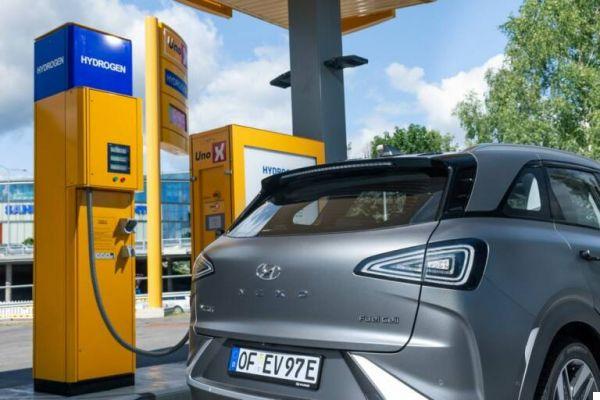
liquefy hydrogen you need to bring it up to temperature of -253 ° C, this may take an energy consumption equal to 40% of the energy content of the substance; furthermore, tanks capable of thermally isolating hydrogen are needed. For compress it at high pressures instead, it never consumes more than 5% of its energy content; for this reason the storage of hydrogen in the gaseous state is the most used method. The problem of storage in the gaseous state is the requirement to use tanks capable of withstanding high pressures, which can weigh up to 10 times the hydrogen contained within them.
Il great disadvantage of hydrogen compared to electric current is related to transport: in fact, while transporting electricity is very simple since there is an already developed network, transporting hydrogen would require a dedicated pipeline network which is currently absent. Therefore, for now, hydrogen can be transported compressed or liquefied on special trucks or trains, or it could be transported mixed with methane, however requiring separation systems for the two gases at the exit of the duct.
Hydrogen car
THEhydrogen can be used as a source of energy to move cars in two ways: like fuel to power an internal combustion engine, or for produce electricity in a fuel cell.
Hydrogen can be employed as fuel in internal combustion engines, using the Otto cycle, the same used for petrol engines: compared to petrol hydrogen allows for higher efficiencies in all conditions, in particular the improvement is more significant at low loads, where gasoline engines consume more than diesel. Furthermore, the use of hydrogen makes it possible to almost completely eliminate the emissions of particulate matter and unburnt hydrocarbons; harmful emissions may occur due to the partial combustion of oil droplets. Using hydrogen, a non-negligible amount of NOx is still produced, although lower than in petrol engines.
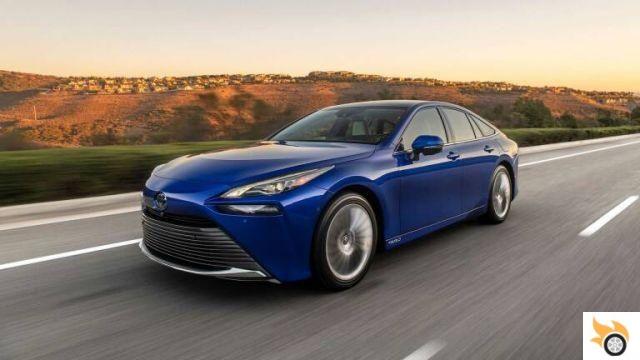
Toyota is working on the use of hydrogen in internal combustion engines. However, theuse of hydrogen in cars as a fuel is not ideal, since while the maximum efficiency values obtained with internal combustion engines do not exceed 35%, fuel cells that use hydrogen do not drop to efficiency values below 40%. For this reason, the hydrogen cars currently on the market are fuel cell cars.
The operation of these cars is based on the fuel cell: in a cell occurs the reverse electrolysis process, in which hydrogen combines with oxygen to form water, electricity and heat. While the hydrogen is withdrawn from the tank, the oxygen must be withdrawn from the air. For this reason the air that will react must be filtered to remove solid particles, which can compromise the correct functioning of the battery.
The water produced is expelled in the form of water vapor, while the energy produced is used to power the electric motors that set the wheels in motion: i fuel cell yields are around 50%, but in the future, with the improvement of technologies, they could reach values up to 60%
In hydrogen fuel cell cars, it is there is also a small battery, around the 2 kWh, that it allows to regenerate energy during braking. The stored energy is used in combination with that produced by the fuel cell in order to make the operation of the cell as efficient as possible. Generally this is more efficient if it works constantly, so the battery provides energy especially in the most demanding situations such as intense accelerations.
FCEV vs BEV
Le fuel cell cars are to all intents and purposes electric cars with several advantages and some disadvantages compared to battery electric cars: a first advantage of auto fuel cells compared to battery powered ones consists of the least weight, this has a positive impact on both dynamic skills and autonomy.
The range of fuel cell cars is generally higher than that of battery cars: fuel cell cars on average travel about 100 km / kg and considering that the models currently on the market have a tank capable of accumulating 5/6 kg of hydrogen, therefore, ranges of 500/600 km are obtained, even if higher values could be obtained . Autonomies of this type are not yet within the reach of battery-powered cars.
Another big plus of FCEV cars compared to BEVs is definitely the refueling time; in fact the Refueling process of a hydrogen car is very similar to that of a methane or lpg car, and typically requires no more than 5 minutes. The times could increase in the case in which many consecutive refuellings have been made at the same refueling station.
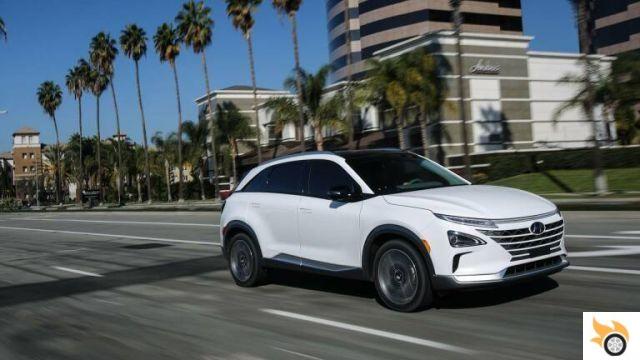
However, the disadvantage of the auto fuel cell compared to battery-powered cars and absence, especially in Italy, of a network of refueling stations: in fact, at the moment there is only one reference station near Bolzano where the cost of refueling is 13/14 euros / kg. The price of hydrogen refueling constitutes a second disadvantage for this type of car compared to battery-powered ones; therefore, the cost of recharging is decidedly lower, and adds to the higher cost of purchasing fuel cell cars compared to battery-powered ones.
In fact, the fuel cell electric car models currently on the market, such as the Toyota Mirai or the Hyundai Nexo, are around € 70.000, higher values than battery electric cars in the same segment. Furthermore, the maintenance costs of fuel cell cars could be higher than the equivalent of battery electric cars, due to the greater complexity due to the presence of the fuel cell.
Are hydrogen cars safe?
THEhydrogen, despite being a highly flammable gas, it is considered safe, because in order to explode, it is necessary that it reaches a high concentration in the air. This is very unlikely to happen: in the event of a spill, hydrogen being less dense than air, 0.09 g / liter versus 1.2 g / liter at atmospheric pressure, tends to rise immediately to the top and then disperse rapidly. For this reason, it is possible to park hydrogen cars indoors without problems as it happens for methane cars.
Furthermore, the tanks, in which hydrogen is stored at high pressures, they are tested to withstand shocks and accidents and avoid any hydrogen leakage; the Hyundai Nexo for example got it 5 stars in crash tests Euro NCAP.
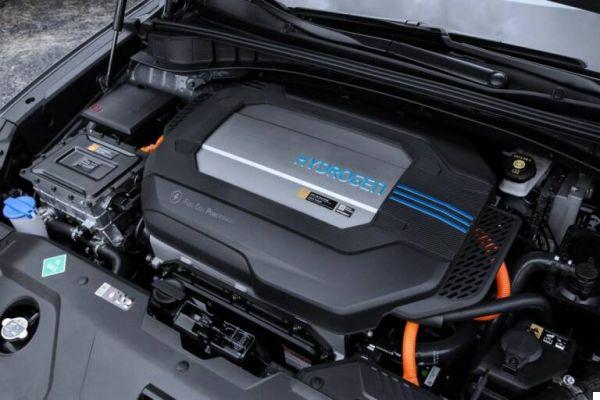
What to expect in the next few years?
THEuse of hydrogen seems destined to increase in the coming years, especially in those transport sectors that require fast recharges and high autonomy, such as public transport; an increase in the network of refueling stations is also expected hydrogen.
However it remains a great skepticism regarding the energy efficiency of hydrogen: in fact, although theuse of hydrogen blue or green to power electric cars fuel cell allows a reduction in carbon dioxide emissions, directly using the renewable electricity produced to recharge electric cars with batteries is much more efficient. In contrast, the manufacturing a battery-powered car requires much more energy than a fuel cell one.
It can also be hypothesized that in the future hydrogen produced from renewable sources will be used as a base to produce synthetic fuels, also known as e-fuels, capable of powering internal combustion engines, having zero impact on carbon dioxide emissions.
Hydrogen cars: how it works and what to expect



